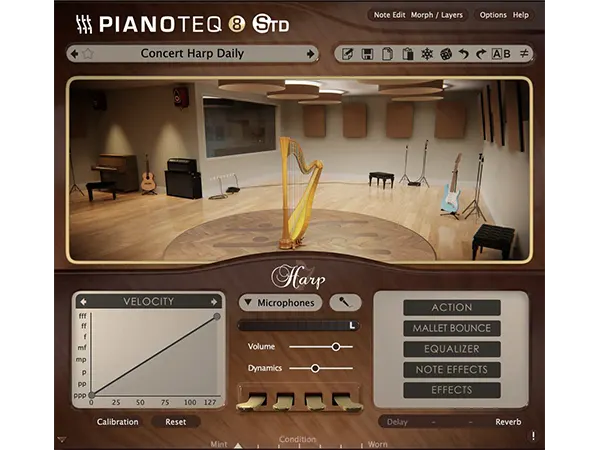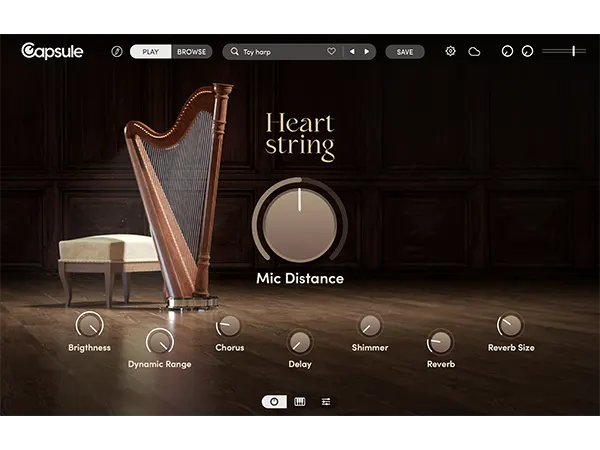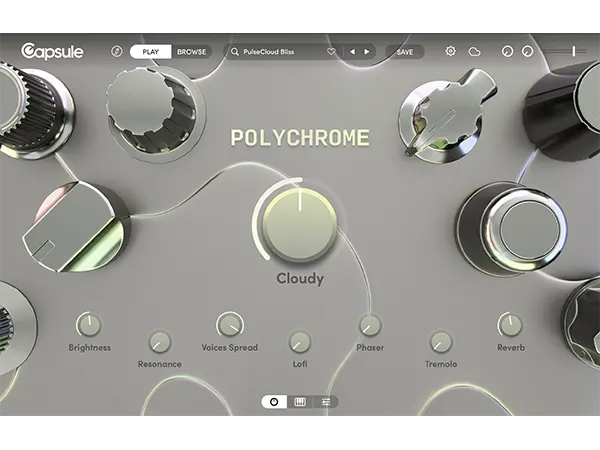Modartt Pianoteq Harp
Modartt Pianoteq Harp: Modeled Concert and Celtic Harp. Requires Pianoteq Instrument. Vibrant collection of Harp Sounds.
Electronic Delivery
PLEASE NOTE: This product is delivered via secure, electronic delivery. You will receive the full product license (with instructions) direct to your email. Enjoy a safe and fast way to get the latest version and full support direct from the manufacturer.
Description
The harp has appeared in many forms since as early as 3500 BC. The pedal harp appeared around 1700 and also was improved in 1810 by S. Erard’s double movement, which allows to play in all keys and is still today’s standard for the concert harp. The harp was extremely popular in the 18th century. Used by many baroque and also classical composers of the time (Händel, Mozart and others). And later started to appear in operas by Puccini and in symphonic music and ballets. By Liszt, Berlioz, Massenet, Debussy, Tchaikovsky, Wagner and others.
The harp is also featured in modern music, appearing in works such as “She’s Leaving Home” by The Beatles and “Dark Lady” by Cher. In the Marx Brothers movies, the very skilled harp player by the nickname Harpo often dedicates entire scenes playing the harp.
Overview
The Concert Harp for Pianoteq is physically modelled after a Salvi concert grand harp. The concert harp possesses 47 strings attached to a soundboard, and is played with the fingertips of the first four fingers with both hands. Since there are no damped strings during playing, the harp has a special magical sound which the Pianoteq technology manages to capture with astonishing authenticity.
The Celtic harp is the new addition to the Harp instrument pack. You have surely heard Celtic harps in folk music as well as in earlier classical music and contemporary new-age. Celtic harps used to be strung with wire or gut but is nowadays also strung with nylon (used in this virtual physical model) which brings a softer and more delicate sound. Requires Pianoteq 6.6.0 or higher.
Both harps allows to play pinch harmonics (flageolets) and glissandos. They include a diatonic mode with seven pedals to change the pitch of the strings and play in all keys.
Pinch harmonics
On a harp, a double action of the hand (simultaneously plucking and touching the string in the middle) produces pinch harmonics containing only even harmonics and producing thus a note which is one octave higher. In this excerpt of “Vers la source dans le bois” (Marcel Tournier), the first sequence of tenor notes C#3, E3, B2 is played normally (C3 = middle C), whereas the second sequence of tenor notes C#2, E2, B1, is played using the Pinch Harmonic pedal. The latter is played one octave below the first sequence, but sounds at the same pitch because the string is being plucked in the middle, producing a sound containing even harmonics, hence one octave higher.
Glissando
Sliding quickly the fingers across the strings produces a glissando, where, because of a distinct finger position, the notes usually have a different timbre than when played single. Here we listen to a short sequence of glissandi in an excerpt of the same music piece “Vers la source dans le bois”.
Features
- Concert Harp
- Celtic Harp
- Possesses 47 strings attached to a soundboard
- Harp has a special magical sound which the Pianoteq technology manages to capture with astonishing authenticity
- Ability to play pinch harmonics (flageolets) and glissandos
Tech Specs
MAC
OS X
WINDOWS
Windows
* Any references to any brands on this site/page including reference to brands and instruments, are provided for description purposes only. For example references to instrument brands are provided to describe the sound of the instrument and/or the instrument used in the sample. Plugin Max do not have (nor do they claim) any association with or endorsement by these brands. Any goodwill attached to those brands rest with the brand owner. Plugin Max or its suppliers do not accept any liability in relation to the content of the product or the accuracy of the description.






Reviews
There are no reviews yet.